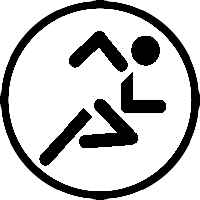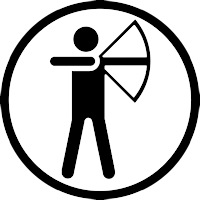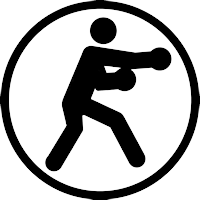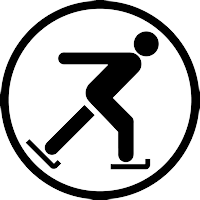Do you ever feel depressed because all you ever seem to do is work and you rarely have leisure time to spend with your friends or family?
Do you regularly feel tired from working so much that you basically just come home and collapse, eat comfort food and watch TV because it requires the least amount of work?
Do you often agonize over the balance between life and work?
Does your family have heart disease, diabetes, and/or a history of Alzheimer's in your family members who also worked long hours every day?
About a century ago it was common for factory workers to be working 10, 12 or even 14 hour shifts. The 8-hour work day only became a reality during the 1930s when there was so many unemployed people that factories were under pressure to spread the number of hours out amongst a greater number of employees.
Following that success various organizations pushed for a 4-hour or 6-hour work day, but those movements never amounted to anything beyond some interesting cartoons about the economy during the 1930s.
Around the same time such organizations involved in the US Labor Movement, primarily the IWW (Industrial Workers of the World), were also pushing for a 4-day work week and other such interesting ideas that never took hold.
If you answered yes to a bunch of the questions at the top, you probably are feeling pretty overworked yourself - or your family has a history of working too hard too. However ask yourself, did working that hard increase the quality of life for you or your family?
Given the choice which do you value more, leisure time or having more money?
Well lets try to answer that question using MATH.
Lets pretend for a moment that you currently work 8 hours per day, 5 days per week for a total of 40 hours per week. And while we are at it, lets assume you are making $20 per hour - so $800 per week, minus taxes/etc.
Then one day your boss offers you a new option: 6 hours per day, 5 days per week for a total of 30 hours per week. Same pay, but less hours so it would be $600 per week, again minus taxes/etc.
At which point you have to ask yourself, would you prefer to work 40 hours per week and be exhausted after work, have very little leisure time, etc.
Or would you prefer 30 hours per week, 10 hours of extra leisure time, and a pay cut?
According to surveys conducted across Canada, most Canadians say they would take the 30-hour work week and would love to have extra leisure time.
There is a third option too. 8 hour work days, but only a 4 day work week. 32 hours total. This way you get a whole day off for leisure time.
Or even a fourth option. 10 hour work days, but only a 4 day work week. 40 hours total. This way you still get a whole day off for leisure time, but are still managing to work 40 hours per week.
However options 3 and 4 seem to miss the point. Overworking causes health problems, like a 33% higher chance of stroke and a 15% higher chance of heart disease. Other health problems like diabetes and Alzheimer's are also associated with overworking.
Taken together this also means that people who overwork have a much shorter life expectancy. Their risks of stroke, heart attack, heart failure, heart disease and many other ailments are dramatically increased. It is difficult to say how much this effects the longevity of people working long hours, but it is safe to say that people working 50 or more hours per week have an average shorter longevity than people working 40 hours per week or even 30 hours per week.
Here are some more facts for you:
The United States is the only country in the Americas that does NOT have paid parental leave. Canada and other countries in North / South America have an average of 12 weeks of paid parental leave. This effects the physical well being of adults working long hours and their ability to balance work and family.
134 countries in the world have laws setting the maximum number of hours a person can work in a week. The USA is one of the few countries without such a law.
Americans work 137 more hours per year than Japanese workers, 260 more
hours per year than British workers, and 499 more hours per year than
French workers. (According to the International Labour Organization.)
The USA has no federal law requiring paid sick days.
Most countries in the world have laws requiring workers to have at least 20 paid vacation days.
Many countries also have paid holidays. The USA has zero. Canada has 9 paid holidays.
I could just keep going. There are lots of facts and figures on this topic I could quote. But my purpose here isn't to tell people to work less hours. It is to encourage people to have more leisure time for the sake of their health and to hopefully have less stress. If you truly love your work and it is stress-free, or maybe you even love having a little stress, then maybe it isn't such a big deal that you work so hard.
But for many of you then you have probably already concluded that having more money doesn't make you any happier. Therefore I want to offer 12 steps you can take in an attempt to have less stress, live healthier and ideally also live longer and fuller.
After all, what is the point of working 50+ hours per week every week until you die at the age of 55 because you didn't take good care of your health? Wouldn't it make more to have more leisure time, take care of your health and live to the ripe old age of 95?
12 Steps to Live Longer, Healthier and More Stress-Free
#1. Do something every day that doesn't cost you any money and yet makes you happy. It might be spending time with your kids, taking the dog for a walk, or going for a nature walk with a friend.
#2. It is okay to ask your boss for less hours at work. The worst they can do is say no. They can't fire you for asking for less hours (because if they did, that would be grounds for a lawsuit).
#3. Remember to use your paid vacation time and/or sick days if you have them. Don't bother saving them up because otherwise you probably won't get to use them at all.
#4. If your work place has the option to do so, asking to work from home might be a good solution for you. Saves on travel time and most companies report higher productivity from people who work from home.
#5. If you have a baby and want to take some time off to spend time with your newborn, it is okay to do so. You might even wish to take extra time off which is unpaid, and that is okay too.
#6. If you somehow suggested to your boss that your entire company switch to a 6 hour work day (possibly with shifts from 9 to 3 and from 3 to 9) that would be just plain awesome. Your whole company, including your boss, would benefit and live longer/be happier as a result.
#7. Take siestas or naps if you get a chance. People who take naps in the afternoon live longer, have less weight problems and have less mental health problems.
#8. Pick a sport or activity you think you could still be doing into your old age and then do it regularly. eg. Dancing is a good activity for both young and old.
#9. When you feel overworked don't go straight for the junk food when you get home. Take your time and make something nutritious instead. The junk food may make you feel happier temporarily, but it is not good for your health or your long term happiness.
#10. Exercise regularly. You don't have to do it constantly, but you should make an effort to at least be doing something that gets your heart rate going. For best results pick exercises or sports that you enjoy doing and makes you happy.
#11. Work towards finding a job where you work less hours, have less stress and feel happier about yourself. Working just to pay the bills may keep bread on the table, but your long term happiness should be the primary goal.
#12. Be creative in how you spend your leisure time. Try new things. Avoid doing the same thing all the time, especially if it is something that doesn't actually bring you happiness.
PERSONAL NOTE
I am reducing my work hours in 2016. Last month I started reducing the amount of hours I am currently working. I currently have an abundance of clients and have raised my rates twice in the last year.
My goal in 2016 is to be working 4.5 to 6 hours per day and only 4 days per week. I estimate I will be working approx. 22.5 hours per week. That may not seem like much, but when you consider I *currently* charge $50 per hour for personal training I would still be doing quite well.
As is normal for personal trainers, not every time slot gets filled so the total number of hours I will be working from week to week may vary dramatically, but ideally this will mean more time for me to focus on leisure activities... things like fishing, working on my skills in the kitchen, and woodworking. While still managing to help my clients achieve their fitness goals.
* I may be raising my personal training rate in 2016 significantly.






























































